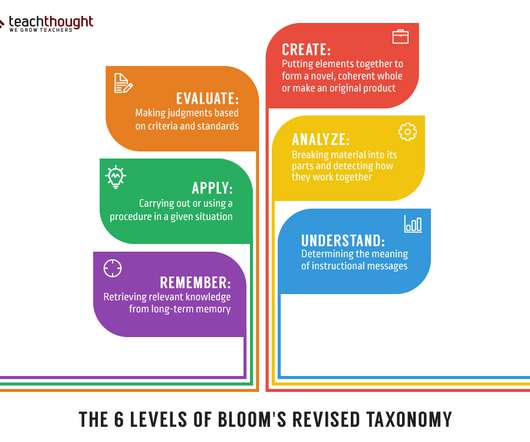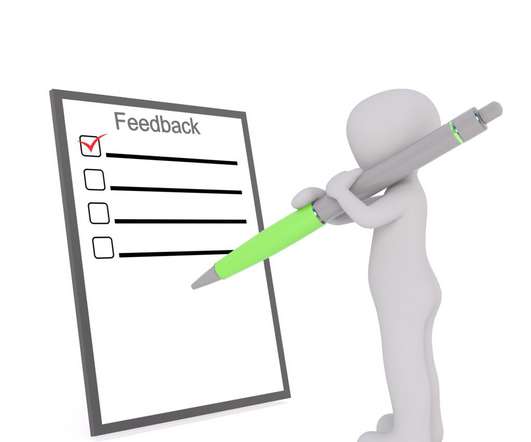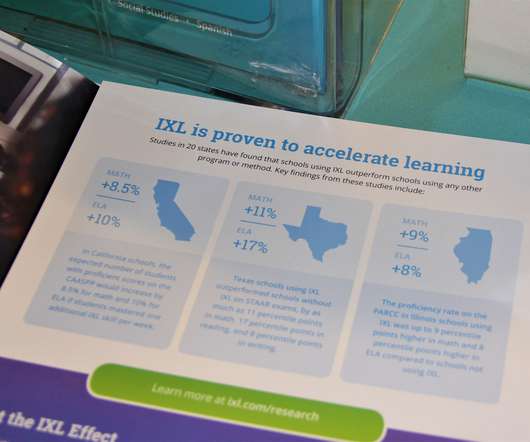What Is Bloom’s Revised Taxonomy?
TeachThought - Learn better.
MARCH 26, 2021
In 2001, a group The group consisted of “representatives (from) three groups: cognitive psychologists, curriculum theorists and instructional researchers, and testing and assessment specialists” (Anderson & Krathwohl 2001). For example, ‘Analysis’ because ‘Analyzing.’ The Definition Of Bloom’s Revised Taxonomy.






























Let's personalize your content